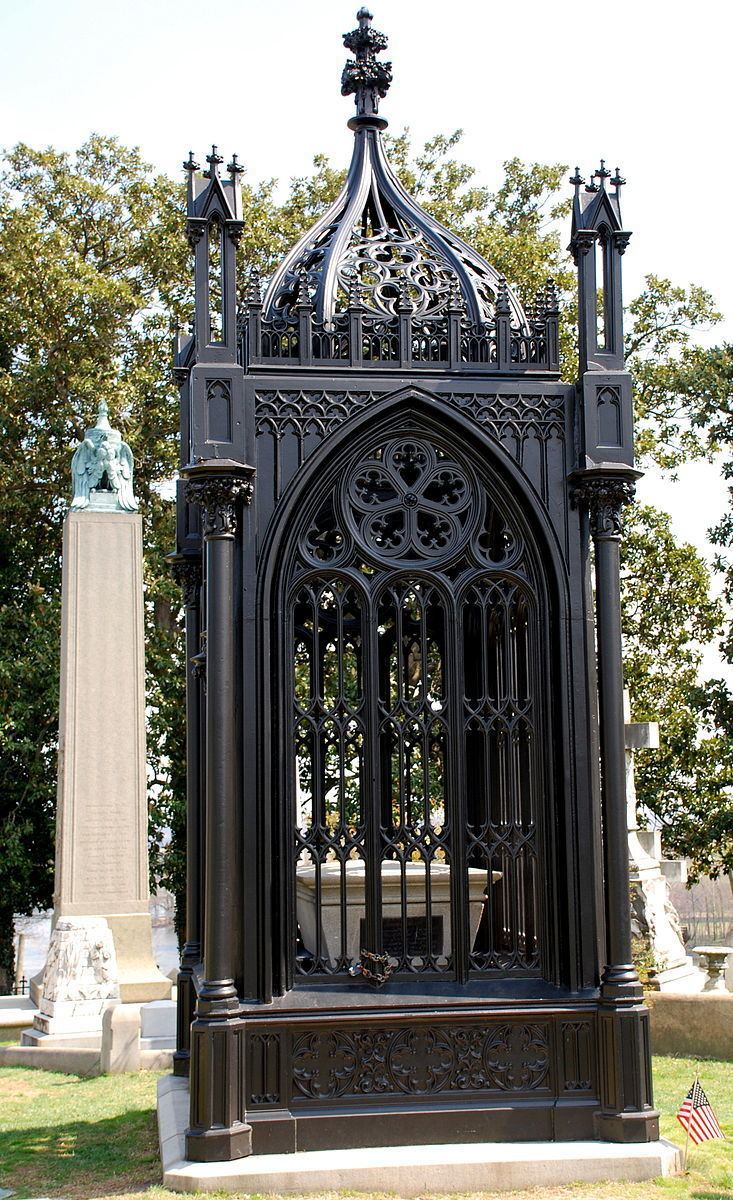Built 1858 VLR # 127-0221-0080 Opened 1858 | NRHP Reference # 71001044 Designated NHL November 11, 1971 Added to NRHP 11 November 1971 | |
 | ||
Architectural style Gothic Revival architecture Similar Hollywood Cemetery, Oak Hill, John Tyler's Grave, James Monroe Law Office, Ash Lawn–Highland | ||
The James Monroe Tomb is the burial place of United States President James Monroe in Hollywood Cemetery, Richmond, Virginia, United States. The principal feature of the tomb is an architecturally unusual cast iron cage, designed by Albert Lybrock and installed in 1859, after Monroe's body was moved from Marble Cemetery in New York City. It was declared a National Historic Landmark in 1971 for its unique architecture. It has been given the local nickname of "The Birdcage".
Description and history
The James Monroe Tomb is located in the southern reaches of Hollywood Cemetery, in a prominent location surrounded by a circular drive and overlooking the James River. Monroe's body rests in a simple granite sarcophagus that is set on a granite plinth (platform). Surrounding the sarcophagus is an elaborate Gothic Revival cast iron "cage", measuring about 9 by 13 feet (2.7 m × 4.0 m). Each face of the cage has a lancet-arched shape similar to that found in the tracery of larger Gothic stained glass windows, with a rose window pattern at the top of the arch. On the long sides, this main arch is flanked by narrow arches. The corners of the cage have colonettes surmounted by tabernacle-like structures. The top of the cage consists of ogee-curved elements meeting at a central spire.
James Monroe died in New York City in 1831, and was interred in New York City Marble Cemetery. In 1856 Virginia Governor Henry A. Wise sought to repatriate his remains to his native Virginia. The state appropriated funds, and Monroe's remains were transported to Richmond aboard the steamship Jamestown. The tomb, erected in 1859, was designed by the German-born architect Albert Lybrock, and its cast iron elements were cast by Wood and Perot of Philadelphia. The tomb is considered architecturally significant first for the scale of its use of cast iron, a material not commonly used at that time for that purpose, and for delicacy and degree of flamboyancy achieved in its creation, which could not have been done in stone.
